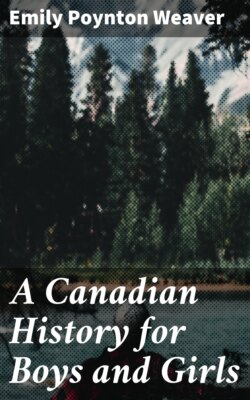Читать книгу A Canadian History for Boys and Girls - Emily Poynton Weaver - Страница 3
На сайте Литреса книга снята с продажи.
PREFACE.
ОглавлениеTable of Contents
The arrangement of this history is generally chronological. There are a few exceptions to avoid unnecessarily breaking the narrative. The book is divided into three parts in order to mark changes of great importance. The First Part deals with the period of French rule; the Second with that of English rule till 1867; and the Third with the History of the Dominion since Confederation. These great divisions have been subdivided into Books, with the object of emphasizing the importance of different epochs in the history of the country. At the close of each Book is a chapter upon the Social Conditions of the period.
At the end of the volume are placed lists of important dates and of the more difficult proper names used in the History, with the pronunciation indicated as closely as possible by phonetic spelling. For this guide to the pronunciation of foreign proper names I am indebted to the kindness of Archibald MacMechan, Esq., B. A., Ph. D., now of Dalhousie University, Halifax.
I have endeavored to tell the story of Canada simply, and to choose subjects for illustration which would help boys and girls to understand the conditions of life prevailing in former times and in different parts of our widely-extended country.
During the preparation of this little book I have received much help and courtesy from the librarians of the Public Libraries of Toronto and Halifax, the Normal School, Toronto, Dalhousie University, and the Legislative Library, Halifax.
I have also to thank the following gentlemen for their courtesy in allowing my sister to copy or adapt illustrations from books published by them:—Judge Prowse, St. John’s, Newfoundland, for illustrations from his “History of Newfoundland” of Eskimos (p. 26 of this volume), A Newfoundland Fisherman (p. 69), Cod Fishing (p. 236), and Laying an Atlantic Cable (p. 264); Messrs. Charles Scribners’ Sons, New York, Washing for Gold (p. 295), from Palmer’s “In the Klondike”; the editor of “The Canadian Magazine,” The Sick Children’s Hospital (p. 300); Messrs. George Bell and Sons, London, for drawings (on pp. 16, 47, 82, 125 and 154) from Fairholt’s “Costume in England”; Messrs. Houghton, Mifflin & Co., Boston, for illustrations from Winsor’s “Narrative and Critical History of America,” Queenston Heights (p. 160), Fort Nelson (p. 63), Fort Douglas, (p. 177), Fort Garry (p. 271), A French Gentleman of the Seventeenth Century (p. 19), A Ship of the Seventeenth Century (p. 29), Canadian Soldier (p. 53), French Soldier, (p. 85), English Soldier (p. 93). For several pictures we are indebted to Catlin’s “North American Indians.” Two, The Indian Mask (p. 140), and The Bison (p. 176), are copied by permission from the Reports of the United States National Museum at Washington. Many other people have most kindly aided us in the illustration of the book by lending photographs, sketches, and old books.
E. P. W.
